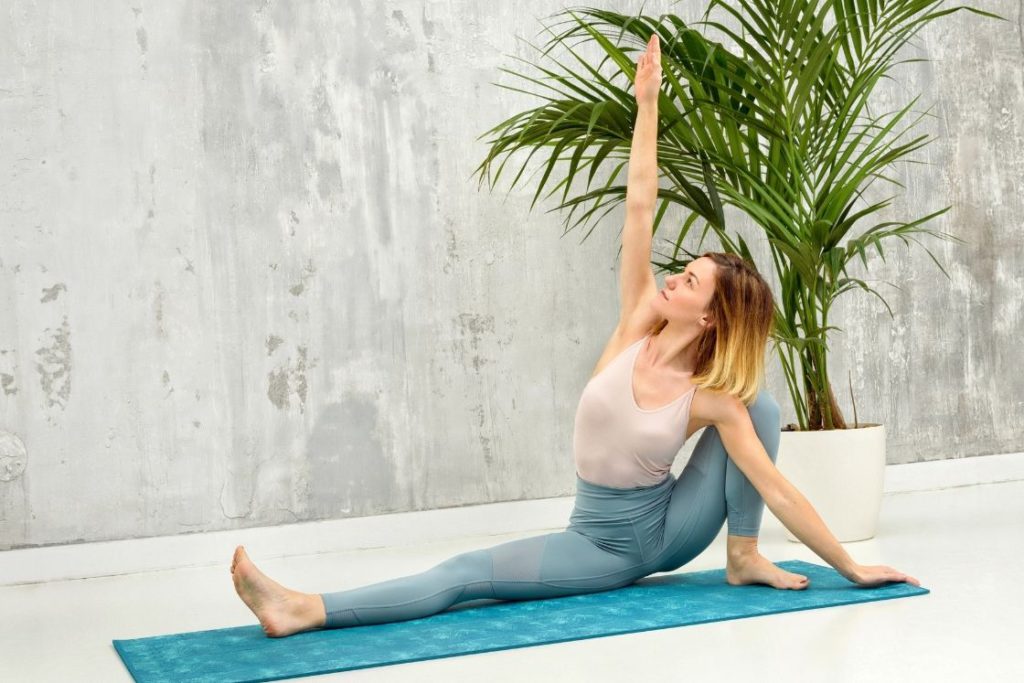
Tight groin muscle is the most common groin pain cause. A major reason behind this lack of flexibility is that most of our actions have our groin muscles working in a frontal plane. The muscles lack side-to-side exercise on the transverse plane.
Yoga poses and stretches can bring gentle movement to stiff groin muscles and heal your groin pain. Yoga will prove beneficial not only for muscle-related groin issues but in the case of other causes as well.
- Gentle yoga stretches can reduce the tightness of your groin muscles and restore their suppleness.
- Yoga poses can reduce injury-induced inflammation.
- Warm yoga exercises can relieve injury-related pain.
- Yoga poses can trigger muscle healing, by enhancing blood flow to the region and enriching the blood with healing nutrients and oxygen.
- Yoga exercises for legs can particularly support the movements in your lymphatic system. This will aid in clearing the elimination of possible infections. This benefit will prove effective if you have a lymph node-related groin irritation.
- Regular practice of yoga will not only heal the pain but restore improved balance and stability in your groin, enabling an enhanced range of performance.
- Thorough yoga training of your groin region is also an effective way to keep the region agile and avoid future injuries. Meaning, yoga is also an effective preventive measure.
- Last but not the least, yoga has a great impact on the healing and stimulation of peripheral nerves, which will resolve pains induced by neurological issues.
How to identify muscle strain causes from others
Groin pain can have other causes than muscle injuries, so how do you differentiate? If the pain increases in sharpness with stretch and motion, and more importantly if the pain is of a burning sensation, or pins-and-needle sensation, it could indicate a nerve related issue. A nerve issue can also cause redness of the region, without swelling.
To diagnose ligament tears you will need an x-ray, but the pain will be constant. Lymph node-related pains will be easy to spot, as they are certainly accompanied by swollen lymph nodes. Even when not, these lymph node-related pains can be spotted by their prominence of irritability over sharpness.
If your groin pain is due to a muscle related injury then you will have a combination of the following symptoms:
- Unpleasant tenderness of the inner thighs
- Difficulty in folding and lifting your knees
- Swelling of the groin area
- Discoloration in the groin region
- Loss of muscle strength
9 Best Yoga Poses for Groin Pain Relief
What you really need to relieve your condition, are the typical yoga stretches, over the holistic static poses. You can modify each yoga pose, in ways that will be more considerate to your groin.
Further, feel free to use props and supports that will aid your balance and strength. However, none of the modifications are to be self-maneuvered but done only under the supervision of professional instructors.
1. Goddess Pose
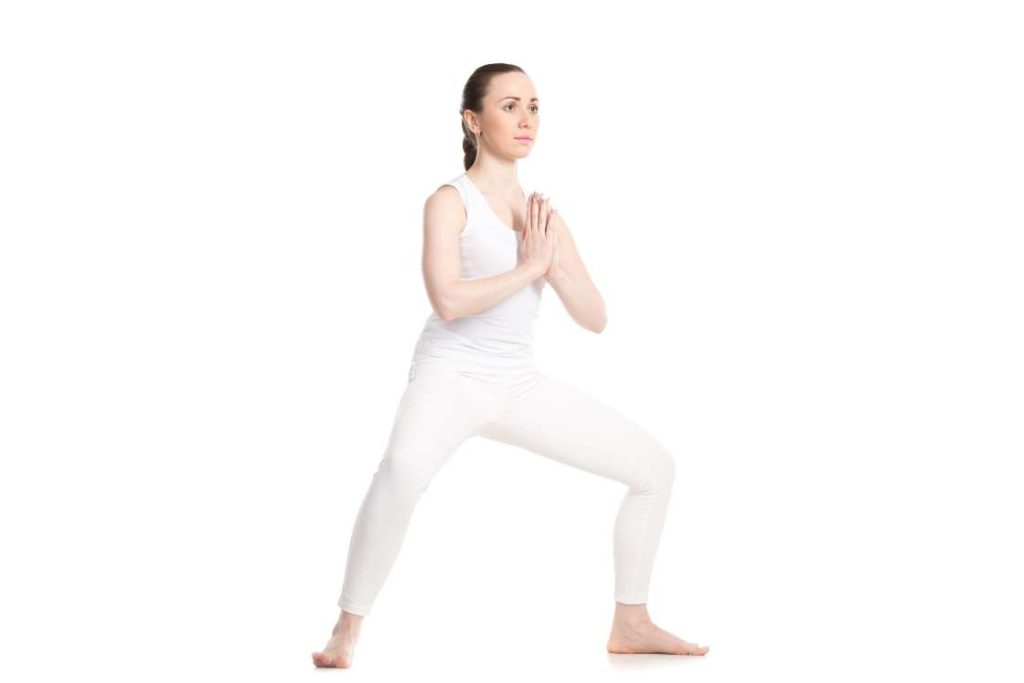
Goddess pose will improve the sideways stretch of your groin. However, unlike most side parting poses, the goddess pose focuses specifically on your groin region.
The best part of this pose is that it not only takes care of the flexibility of groin muscles but of the strength and balance as well. In many ways, this pose is a complete exercise for the groin muscles. This pose will restore a lot of stability to your hips as well.
- Stand in a mountain pose
- Set your feet wide apart by 4-5 feet, depending on your height.
- Rotate your toes outward
- Bend your knees and sit down in a squat
- your groins will be stretched open sideward, and your either knee will be pointing towards their respective side.
- Keep squatting down till your thighs are parallel to the ground.
- Keep your upper body straight, and do not lean forward like you would usually in squat.
- Breathe steadily and hold the pose for 7 breaths.
Note: You can have multiple placements for your hands. You can rest them on your knees. Alternatively, you can join them in a Namaskar mudra in front of your chest. Or simply raise your hands straight overhead. You can even raise your hands straight toward the sides of your body, along the transverse plane.
2. Garland Pose
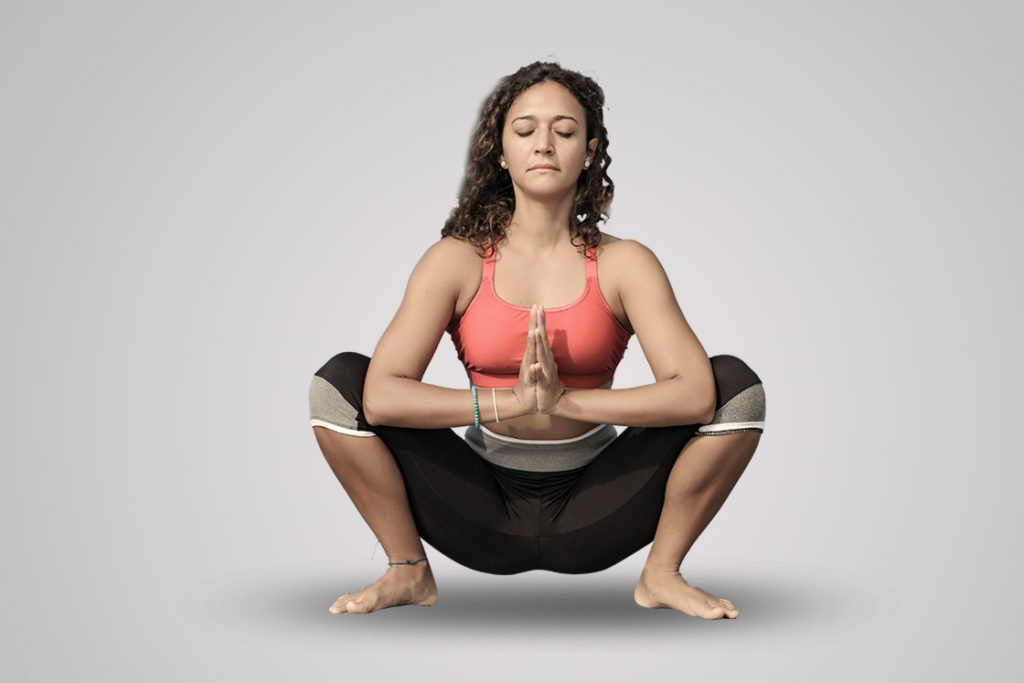
Also known as full squat, garland pose increases the range of motion in your groin, improves stability and enhances strength. This pose is great for your knees as well.
The garland pose and the goddess pose provide more strength and stability to your groin than any other exercise on the list.
- Stand in a mountain pose, with feet hip width apart.
- Raise your hands straight , at shoulder levels, in front of you.
- Bend your knees and sit down in a squat.
- As you bend down slightly lean your body forward.
- Squat all the way down to a full sitting squat.
- Let your knees comfortably extend outward.
- Hold the pose for 7-10 breaths.
Note: You can use a yoga block as a support under your sitting bones, during the hold. Or you can simply drop down your hands to hold the ground for support.
3. Bound Angle pose
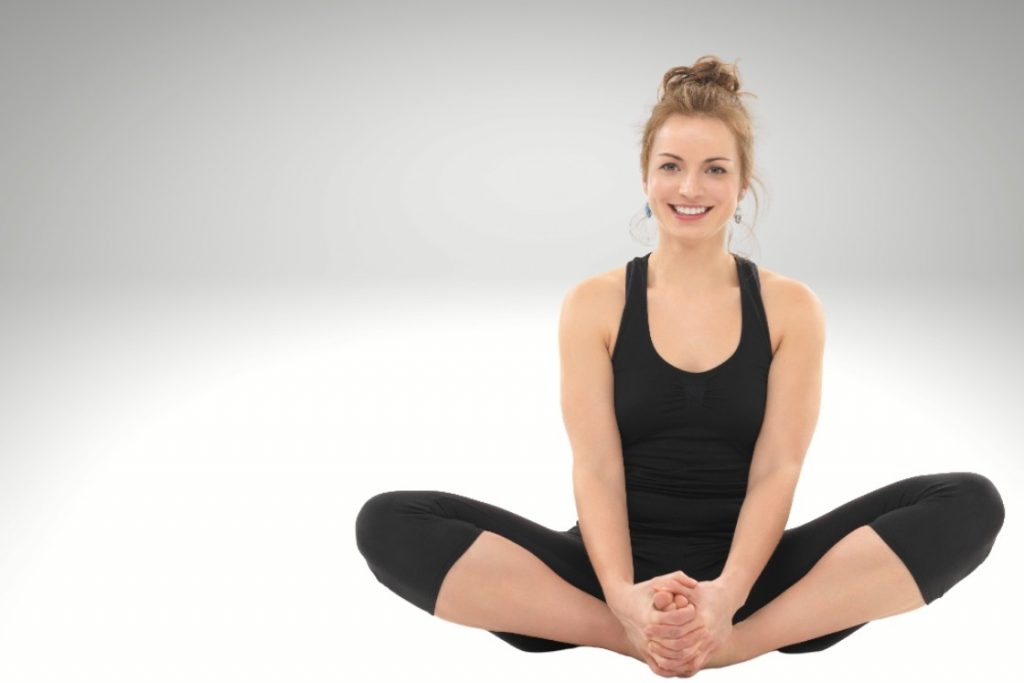
Bound Angle Pose is a specific pose to ease your groin. This pose will relieve muscle stiffness and soreness in your groin region and provide anti-inflammation functions too.
Moreover, this pose is particularly effective at healing and stimulating groin nerves.
- Sit in a staff pose
- Bend and fold up your knees
- Open your knees on either side.
- Drop your knees toward the ground, but not touching the ground. Keep a gap of few inches between your knees and the floor.
- As you drop down your knees, join the soles of your feet together.
- Clasp with your hands around your feet.
- Keeping your upper body straight, slightly lean forward.
- Breathe steadily and hold the pose for 20-30 seconds.
Note: Place a yoga block under each knee. The weight of your legs will normally pull at your groin muscles. This pull is a good exercise in general, but with injured groin muscles, too much of this pull can have negative effects.
4. Happy baby pose
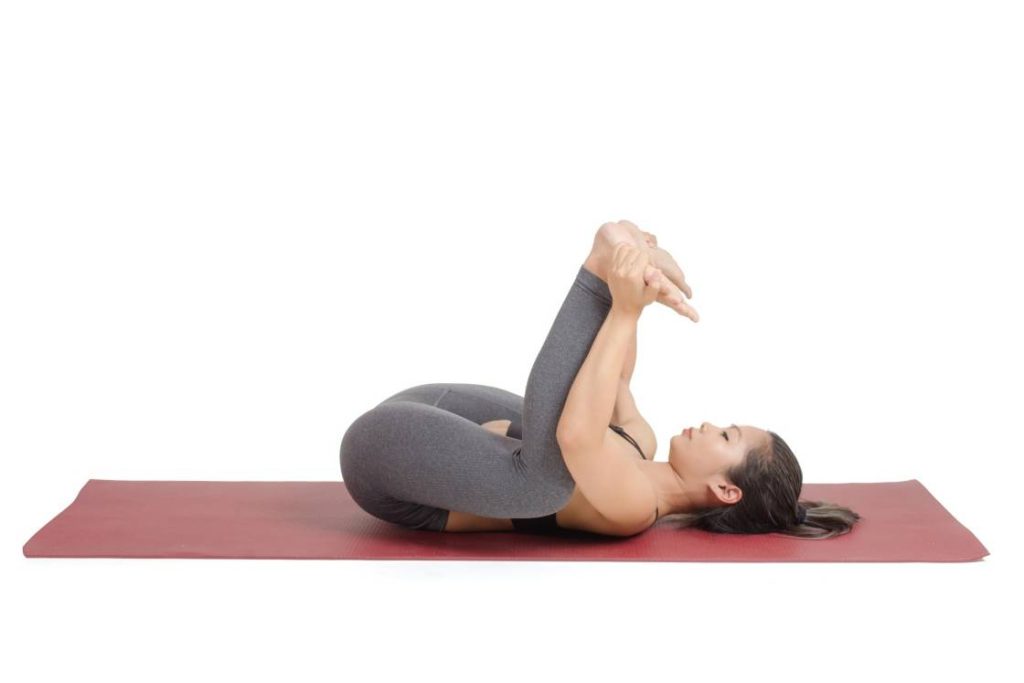
Happy baby is a hip and groin opener. This pose is a must if your groin pain is a result of a hip injury. It benefits the groin muscles, equally at the hip end and thigh end. Also, the happy baby will also prove elemental in reducing your stress levels and relieving sensations of pain.
- Lie supine on the ground.
- Keep your legs and knees joined.
- Bend and fold up your knees.
- Draw your knees towards your chest.
- Put your hand from between your knees and hold your big toes.
- Pull open your knees and toes on either sides.
- Pull your knees and toes away from each other be comfortable 4-5 feet.
- Pull your toes downward, so that your knees come closer to the ground.
- The goal is to touch the floor with your knees, but close to it is fine.
- Hold the pose for 15-20 seconds.
Note: Tight groin muscles will naturally restrict this pose, thus it is important, you approach with patience and gentleness. Initially just feel the stretch at groin, rather than trying to bring down the knees to the floor. Also while doing the pose don’t lift your hip off the floor.
5. Split-Legs up the wall
This pose is actually a variation of the legs up the wall pose. The variation is specifically directed towards benefiting groin issues. Normally legs up the wall improve blood flow and lymphatic functions in the groin and lower abdomen region, so those benefits will be retained in this pose as well. The split variation will add sideward stretching of your muscles, to increase strength, flexibility, and nervous control.
- Sit on the floor, against a wall, with your right side to the wall.
- In one smooth flow, roll over and lie on the floor, with your back to the floor and legs up the wall.
- Make sure your sitting bones are exactly against the intersection of the floor and the wall.
- Keep your legs nicely pressed against the wall, your back against the floor and extend your arms outward at the sides of your body.
- Breathe steadily and split open your legs across the wall, on either sides.
- There is no specific degree to the split, ideally you should have somewhere between 60-90 degrees of split between your legs, but considering the grin injury reach for a safe limit.
- Hold the pose for 5 breaths, and repeat it thrice.
Note: You may want to try this pose without the wall, and especially so if your groin pain/injury isn’t serious. In such a case you first lift both your legs, and slowly feeling the balance and stability, you split open your legs. This variant will be much better for balance, stability and strength.
6. Wide-legged standing forward bend
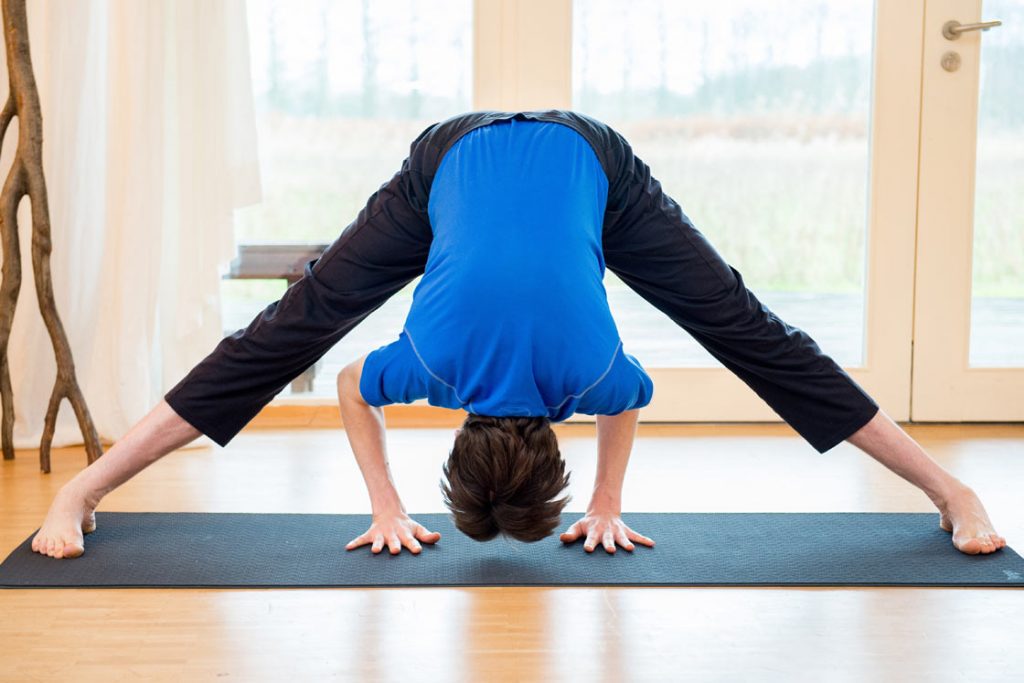
Wide-legged standing forward bend is a great flexibility enhancer. The pose includes a bend in your groin, that triggers the benefits. This pose, especially if performed with repetition, can improve muscle contractions and relaxations. It benefits your muscles and nerves in the groin, equally. The wide-legged standing forward bend will also boost your metabolism and blood flow.
- Stand with your feet 4-5 feet apart. Depending on your height.
- Raise both your hands overhead, straight.
- Bend your upper body from your groin and bend down completely.
- Bend down till you can touch the floor with your hands.
- Remember not to bend the knee and keep your upper body straight.
- Nicely throw your upper body forward, dive in with your chest out, and keep your hips stable.
- Once touching the ground, hold the pose for 2-3 breaths. get back up and repeat the pose for 5 times.
Note: Some people attempt to touch their elbows to the ground, which would be great if you could, but with a groin injury it will be unlikely. However, as you are touching the ground with your hands, slowly try to increase the bend at your groin, and find a safe limit to push further.
7. Head-to-knee
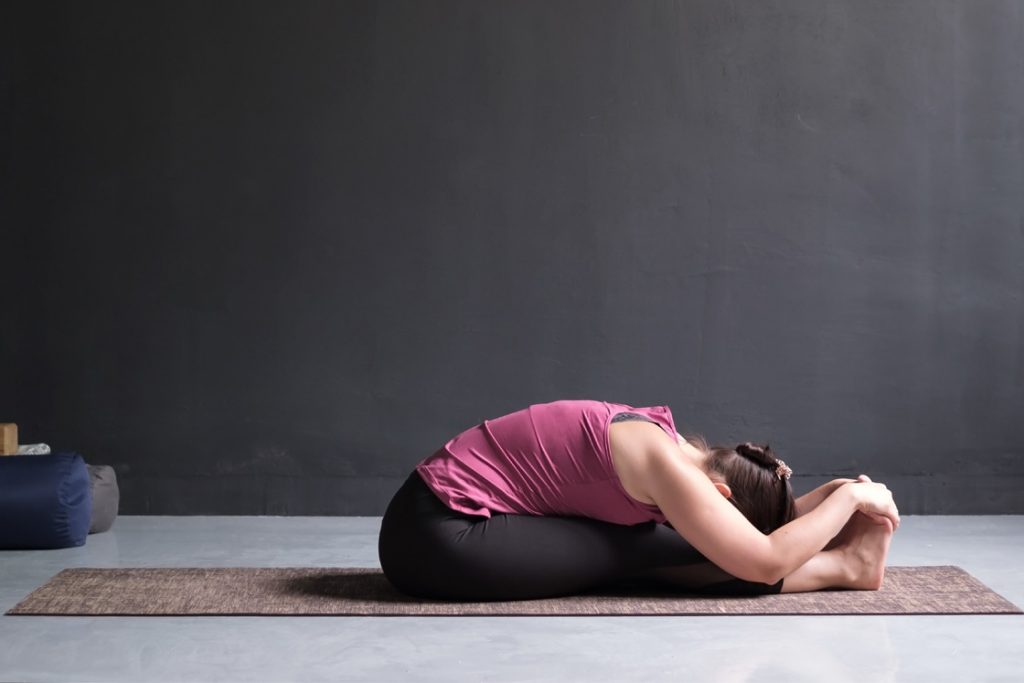
This pose involves back-to-back stretch and bend actions in your groin, that enhance the range of motion in the region. This pose is one of the few poses on the list that will help in deep ligament injuries as well. The head-to-knee pose also improves metabolism, groin nerve functions, and lymphatic functions.
- Sit in a staff pose
- Without lifting off the floor, fold your right knee and draw your right foot closer to your groin.
- Set your right foot against the insides of your left thigh.
- Keep your upper body straight, and bend forward to touch your knee with your forehead.
- Do not bend your knee.
- Use your hands to hold down your knees, and add some support.
- Hold the pose for 5 breaths and repeat the pose with the other leg.
Note: Initially if touching your forehead to your knees feel difficult, which very well could be, don’t force it. Instead try touching your feet with your hand. Gently push your head towards your knee, within safe limits.
8. Side lying groin stretch
This unique stretch will definitely enhance the sideward flexibility of your groin muscles, but what it truly focuses on is the balance, control and strength of your groin muscles. This pose will also increase the strength and stability in your hips. Side lying groin stretch is something you can continue to practice in the long term, to increase groin strength, agility and dexterity.
- Lie supine on your back.
- Extend straight our right arm overhead.
- Lying down, turn to your right and balance up your body entire on your right side.
- Your left leg will be stacked up over your right leg.
- Fold your right arm up from the elbow, lift up your head and rest it on the right hand.
- Keeping your left leg straight, raise it upward.
- Raise your left leg up to point where it is at 60 degrees with the ground.
- Hold the raised leg for 10 seconds and repeat the same on the other side with the other leg.
Note: Balancing your body on one side of your body is going to be a prominent challenge of the pose. Before lifting your leg, spend enough time focusing on balancing your body on one side. Alternatively, at the initial sessions, hold the ground with one hand to maintain your body balance as your raise your leg.
9. Frog groin stretch
Frog groin stretch is a very simple to perform exercise, and is extremely comfortable. When it comes to relieving pain, this pose is a must, along side the Bound Angle pose. The frog groin stretch relieves pain in both the groin and hip region. This pose will aid in resolving stiffness, soreness and inflammation.
- Get in to a child’s pose.
- Lift your buttocks up, and slide forward to bring your hips over your knee.
- Lift up your upper body on your elbows.
- Keep your elbows at shoulder width distance
- Push your chest down to increase the stretch in your upper body.
- Nicely open your knees on either sides of your body.
- Stretch out your knees comfortably wide on either sides of your body.
- Arch your upper body upwards and push down your pelvis toward the ground, increasing the stretch in your groin.
- Hold the pose for 20-30 seconds
Note: As you push down the pelvis it might feel more comfortable to rest your pelvis on the floor, but don’t. Hold it slightly above the floor, this will build some positive tension in your groin region. You can further increase the arch in your upper body, by putting up your body on straightened hands.
Conclusion
Be very careful with the type of pain you are having in your groin. If you have serious infections or major ligament tears you will need traditional medical attention. Even in case of muscle injuries, be sensitive of the intensity of the injury. Make sure in every pose you are stretching only to a safe limit, and under strict supervision. And needless to say, to heal an injury you will need sufficient rest. If you undermine your rest you will surely worsen it.



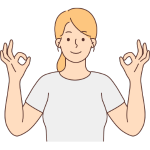
 Oct 24th to 30th
Oct 24th to 30th Learn Mudras
Learn Mudras  Deepen Your Practice
Deepen Your Practice  Find Inner Peace
Find Inner Peace